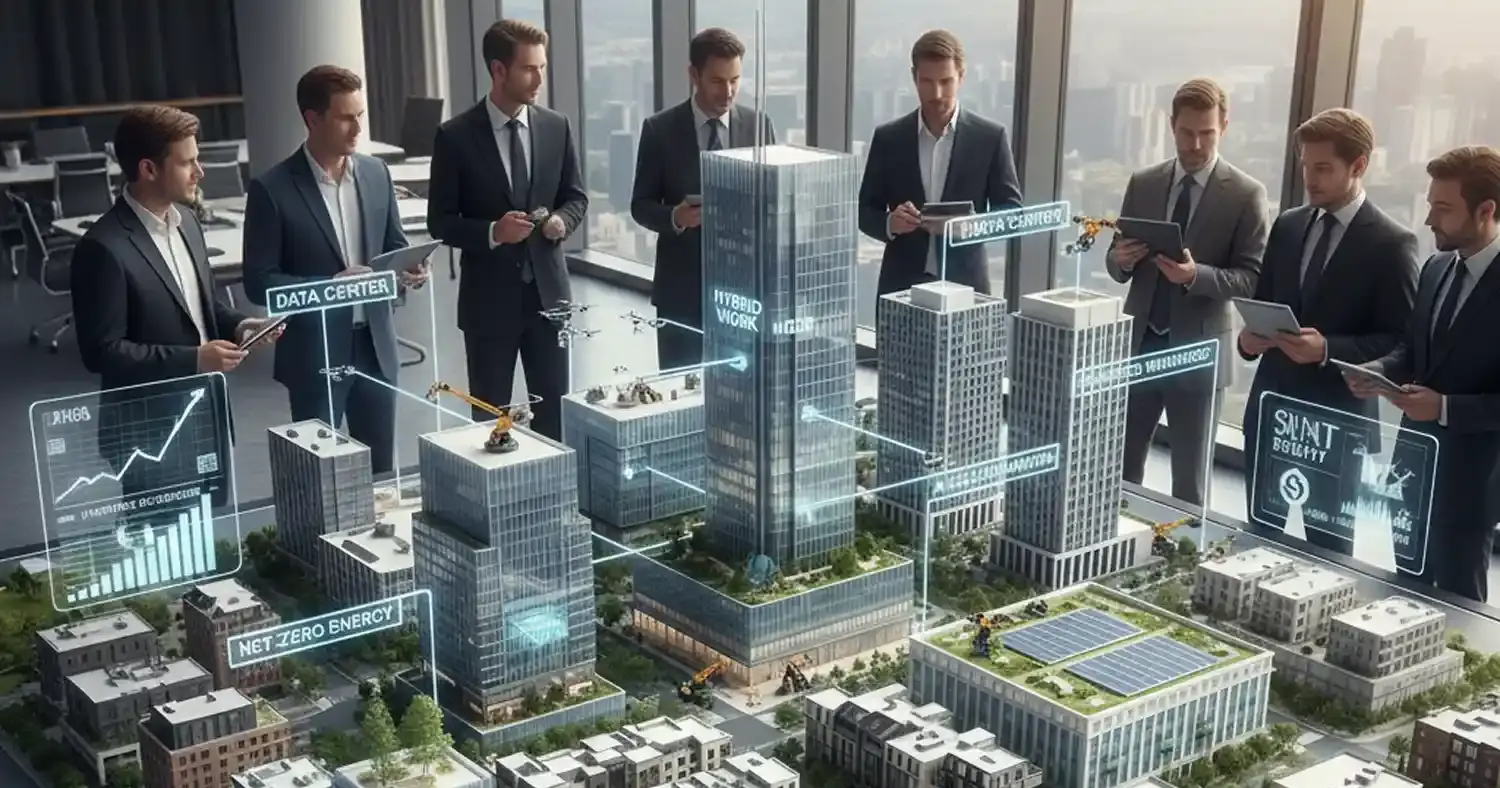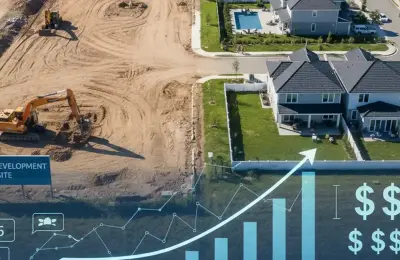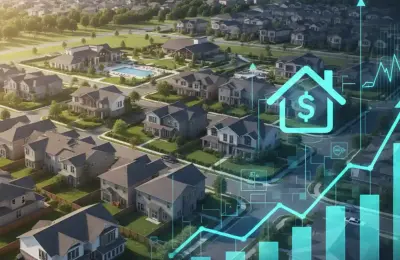
2025 USА Real Estate Trends Every Developer Should Watch

The New Reality of the USА Real Estate Market
The US real estate market stands on the verge of significant changes in 2025. Following years of high interest rates, inflation, and adaptation to new work models, developers must rethink their strategies. Success will depend on the ability to integrate technology, meet demands for affordable housing, and focus on sustainable development.
Here are seven key trends that will have a decisive impact on the US development landscape in 2025.
1. The Dominance of Hybrid Work and Shifts in Commercial Real Estate (CRE)
The era of hybrid work has fundamentally changed commercial real estate needs.
Office Sector: Demand is shifting from large central offices to smaller, high-quality, technologically equipped "Hub-and-Spoke" models. Developers who focus on converting older office buildings into residential units or flexible workspaces (Adaptive Reuse) will gain an advantage.
Retail Sector: Local shopping centers in suburban areas are seeing a revitalization as people increasingly work and shop closer to home.
2. Focus on Affordable Housing and "Missing Middle" Housing
The issue of housing affordability is intensifying. In 2025, developers will face greater pressure (and opportunities) to build housing that meets the needs of the middle-income population (Affordable Housing).
"Missing Middle" Solutions: There will be a growing interest in formats such as townhouses, duplexes, small multi-family buildings (4-8 units), and other housing types that fill the gap between detached homes and high-rises.
Permitting Simplification: Local governments are expected to liberalize zoning regulations to accelerate the construction of affordable housing.
3. The Technological Revolution: Artificial Intelligence and Automation
The use of Artificial Intelligence (AI) will cease to be a niche trend and become a necessity for increasing efficiency and reducing costs.
Design and Planning: AI will assist in optimizing site planning, risk analysis, and demand forecasting, significantly speeding up the pre-development phase.
Construction: Increased adoption of robotics and automated systems for performing routine and dangerous tasks on construction sites, leading to improved quality and safety.
4. Sustainable Construction (ESG) as the Standard
Environmental, Social, and Governance (ESG) standards will become not just a trend, but a baseline requirement for investors and tenants.
Net-Zero Buildings: Demand for energy-efficient, Net-Zero Energy Buildings will rise. Developers must integrate solar panels, high-efficiency insulation, and "green" roofs.
Occupant Health: Emphasis on the indoor environment—air quality, natural light, and the use of sustainable materials (WELL, LEED certifications).
5. Regional Shifts and the Growth of "Sun Belt" Cities
Migration patterns continue to influence demand. The Sun Belt region (Southern and Southwestern US) remains attractive due to lower cost of living and favorable tax climates.
Secondary Markets: Developers will increasingly invest in Secondary Markets, such as Austin, Nashville, and Tampa, where growth potential is higher, and competition and costs are lower than in New York or San Francisco.
6. Infrastructure Modernization and the Data Center Sector
The pandemic underscored the importance of reliable infrastructure.
Logistics and Data Centers: There will be sustained demand for warehouse spaces (due to the growth of e-commerce) and Data Centers, which are crucial for supporting remote work and the digital economy. Developers should seek sites with access to powerful utility grids.
7. Financing: Credit Tightening and Alternative Sources
Despite potential rate cuts, access to traditional bank financing will remain challenging.
Private Capital: Developers will increasingly turn to private equity, Real Estate Investment Trusts (REITs), and crowdfunding to secure financing.
Opportunity Zones: Investments in federal Opportunity Zones will remain an important mechanism for securing tax benefits when investing in less-developed areas.
Conclusion: The Strategy for Developer Success in 2025
In 2025, the successful developer is one who adapts, integrates, and anticipates.
Adaptation: Reorientation from classic offices to flexible and residential spaces.
Integration: Implementation of AI and sustainable construction (ESG) at all project stages.
Anticipation: Investing in growing secondary markets and affordable housing formats.
Understanding these US Real Estate Trends 2025 is not just a competitive advantage—it is a necessary condition for a stable and profitable business.
News insight
 Nov 18, 2025
Nov 18, 2025
Property Developer Earnings in the US Market: A Comprehensive Overview
Explore how US property developers earn money. Learn about profit margins (Residential vs. Commercia...
 Nov 18, 2025
Nov 18, 2025
What Is a Build-to-Rent (BTR) Development?
Discover what a Build-to-Rent (BTR) development is. Learn about this growing real estate model, its...
 Nov 17, 2025
Nov 17, 2025
Build-to-Rent: Transforming America's Housing Landscape
Explore how the Build-to-Rent (BTR) model is transforming the US housing market. Learn why instituti...
